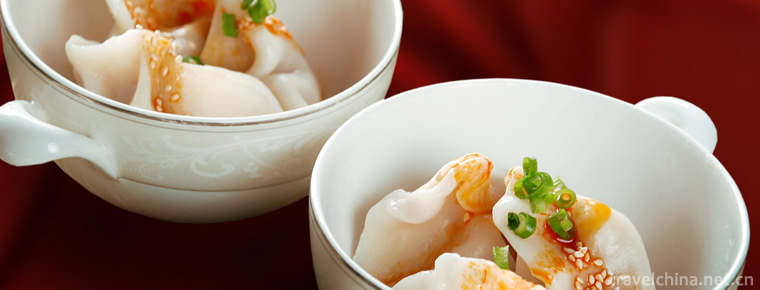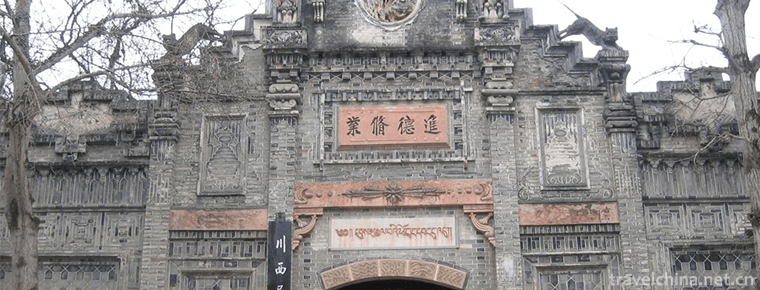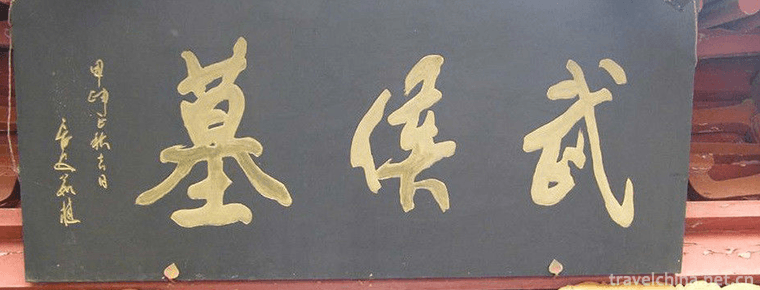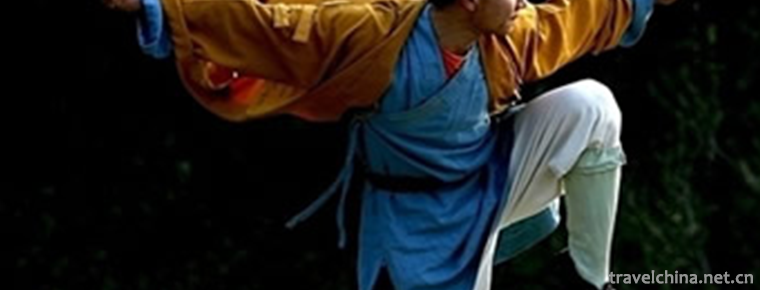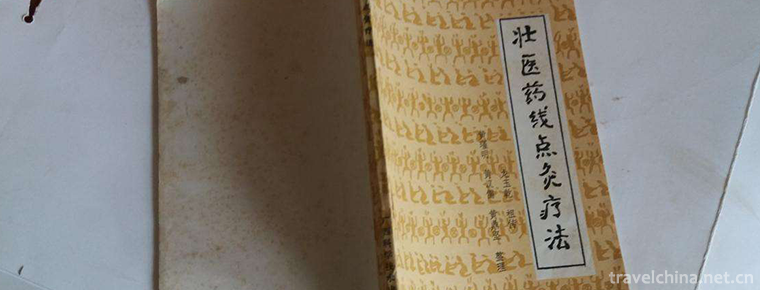Dujiangyan Drainage Festival
Dujiangyan Drainage Festival
The Qingming Drainage Festival is a traditional festival in Dujiangyan, Sichuan Province. Every year during the Qingming Dynasty, Dujiangyan City welcomes the annual Qingming Drainage Festival large-scale tourism activities, which began in 978 A.D. to commemorate Li Bing's father and son who led the public to build the Dujiangyan Water Conservancy Project and benefit the Chengdu Plain. In ancient times, in winter, people built temporary cofferdams with mandarins to make Minjiang River water enter the inner or outer rivers, and then wash out river beds and reinforce River embankments. This is annual repair. In the Qing and Ming Dynasties, a solemn and warm ceremony was held to sacrifice Li Bing's father and son, pray for Wugu Fengdeng and Guotai Min'an, and then dismantle the chatters, rolling the Minjiang River straight into the Inner River, irrigating the vast fields of Chengdu Plain. It expresses the arduous and brave working people's love, yearning and pursuit of life.
brief introduction
The Qingming Drainage Festival is the traditional folk culture of Dujiangyan City, where the Dujiangyan Water Conservancy Project is located. Historically, the Qingming Festival of the lunar calendar held a grand water release ceremony in Dujiangyan every year to wish the agricultural harvest in that year. This is a long-standing traditional custom in the western Sichuan plain. At that time, local officials will personally hold the water release ceremony and hold grand celebrations.
The Drainage Festival began with the sacrifice of water. That is because before the construction of Dujiangyan, the flood along both sides of the river was changeable, and people suffered from the flood. In order to pray for the protection of the "water god", they often worshipped the water along the river. After the success of the construction of Dujiangyan, the flood and drought in Chengdu Plain were from people who did not know how to be hungry. In order to commemorate the great father and son of Li Bing, people changed the former "worship water" to "worship Li Bing". Local people also spontaneously organized the Erwang Temple to sacrifice Li Bing's father and son, and held the Erwang Temple Fair, also known as the Qingming Fair.
Every winter dry season, people build temporary cofferdam at the head of the canal with the unique "fir interception method". When repairing the inner river, the water is blocked into the outer river, and when repairing the outer river, the water is blocked into the inner river. During the Qingming Festival, Neijiang irrigation area needed spring irrigation, so a solemn ceremony was held at the head of the canal to remove the Mandarin bar and put water into the irrigation canal. This ceremony is called boiling water. The "Spring and Autumn Cattle Show" held on the Minjiang River during the Qingming Festival of the Tang Dynasty was the earliest "Drainage Festival". In 978, the Northern Song government officially designated the Qingming Festival as the Drainage Festival.
The Qingming Drainage Festival reproduces the long historical development process and folk culture of farming culture in Chengdu Plain. It reflects the excellent quality of the Chinese nation in advocating the sages and rewarding virtue and grace, and has practical significance in promoting traditional culture. Nowadays, Dujiangyan can release water all year round. But the old system of draining water on Qingming Festival is still a memorable festival for the people of Western Sichuan. As an ancient folk culture tradition and tourism project with Bashu characteristics, the festival is still held on schedule every year.
The State attaches great importance to the protection of intangible cultural heritage. On May 20, 2006, the folklore was approved by the State Council and listed in the first batch of national intangible cultural heritage lists.
Origin
The Chinese nation is an ancient nation that thrives on agriculture. Water is the most important resource for people. In the ancient times of flood and famine, without scientific knowledge, people thought that the God of water was making a mistake in every flood disaster. In order to avoid the disaster and make good weather, they had to pray for the illusory "god of water", so the ceremony of "worship water" appeared in ancient times. The Legendary God of water is called "Hebo". Simon Leopard Zhiyou tells such stories about Minjiang River valley. Before Qin Dynasty, the flood of Minjiang River was changeable. People along both sides of the river lived in deep and hot water. People were bored with life. People with simple and honest ways always carried three animals to the river to "worship water" every flood season, and begged river gods to protect them year after year. It is said that Binger, Li Bing's daughter, once sacrificed water.
By 256 B.C., Shujun Shouli Bing led the migrant workers to build Dujiangyan, a water conservancy project unparalleled in the world. From then on, the flood and drought in Chengdu Plain had no idea of famine. Dujiangyan has lasted for a long time, the main reason is to maintain a strict system of year-round repair. In order to commemorate Li Bing, people changed "worship water" to "worship Li Bing". In the dry season of winter, temporary cofferdams are built at the head of the canal by the special "mandarin fir interception method". When the outer river is built, the water is blocked into the inner river. When the inner river is built, the water is blocked into the outer river. When the irrigation area of the inner river needs spring irrigation, a grand and lively ceremony is held in the canal to remove the Mandarin fir and put water into the irrigation canal. This ceremony is called "boiling water". The three years of Taiping Xingguo in the Northern Song Dynasty (A.D. 1978) are just. The Qingming Festival was officially designated as the "Drainage Festival", which was also called "Water Sacrifice" in the Qing Dynasty. After the Republic of China, the term "Drainage Festival" was restored. "Drainage Festival" is the most solemn festival of the people in Western Sichuan, especially the Spring Festival.
Li Bing
Li Bing presided over the creation of Dujiangyan, which made the western Sichuan plain, which had suffered from floods and droughts for a long time, a rich and world-renowned "land of heaven", and the people's gratitude for him is unforgettable. When did the commemoration of Li Bing begin? There is no clear record in history and no way to check. The excavation of the stone statue of Li Bingyuan in the Eastern Han Dynasty provides strong evidence that the people of irrigation districts commemorated Li Bing more than 1800 years ago in the Eastern Han Dynasty. When Qi Jianwu (494-498 A.D.), Liu Jilian, a governor of Yizhou, moved "Wangdi Ci" from the head of Dujiangyan canal to Danxian County to recruit Li Bing, a famous temple. Emperor Taizong of Tang Dynasty (712-756 AD) praised Li Bing as "General Shenyong". Xuanzong was fortunate to Shu, and later sealed Li Bing as a "Sikong Xiangguo". Tang Dynasty "Spring and Autumn Bullfighting" commemorates Li Bing. Zhao Kuang, Taizu of the Song Dynasty, renovated Chongde Temple, enlarged the base of the temple and created Erlang statue.
Fulongguan has also become a temple in memory of Li Bing. Lu Fangweng's poem "Viewing Sun Taigu's Painting of King Yinghui in Fulongdong" is enough to show that Li Bing had been king in the Song Dynasty. In the seventh year of Song Kaibao, Li Bing was renamed "King of Guangji", which was designated as an annual sacrifice. In the middle of Song Dynasty, it was changed to the Spring and Autumn Festival. The sacrificial activities in the Song Dynasty were of great scale. In Fan Chengda's Leaving the Pile, there are poems of "Fifty thousand goats, cutting drums and smoke roots in spring and autumn". "The Wake-up Note" said: "Shuikang Jun Yinde Temple recruits Li Bingfu in Words are flourishing and more than 40,000 sheep are used every year. Every man who buys sheep for sacrifice dares not keep his lambs." "Guanxian Local Records" also said: "In the Tang Dynasty, Shu people used sheep to slaughter King Li, and the river front of the temple was a slaughter house." In the year from Yuan to Shunyuan (1330 A.D.), Li Bing was named "King Yinghui of Shengde Guangyu". The sacrificial specifications were "Silk 1, Sheep 1, Department 1, Deng 1, Delete 1; Ji 2, Cluster 2; Four, Dou 4, Zun 1, Jue 3, Furnace 1, Tie 2". Erlang's sacrifices were the same as Ice. The ceremonial procedure is: the official dress of the chief priest, two kneeling and six kowtows, laying silk, reading wishes; sending gods, looking at the fire; saluting the ceremony and withdrawing. Zhu Wenwei said, "Vitalize the gods, promote the benefits and eliminate the `e'. Make stretches across the river, boat line Qingbanquet. Irrigation three counties, Woye thousands of miles.
Paste breaks through the links, so far called beautiful. Salt has not been opened yet. Shu uses it for grace. Stone people stand, Shu harmful to eliminate. Repaying merits and virtues, the garden pilgrimage seal `Spring irrigation, reasonable and respectful'. This kind of sacrifice has been used until the end of Ming Dynasty. In the fifth year of Yongzheng in the Qing Dynasty (1727 A.D.), Li Bing was added to the list of "King Fuze Xingji Tongyou" and the amount of "merit protection" was given. In the third year of Guangxu (1887 A.D.), Li Bing was sealed up as "Tongyou Xianying King" and awarded the sum of "Gong Zhao Shu Road". The following year, it was added as "Tongyou Xian Huixiang Protector King" and "Lu Hai Golden Embankment" was awarded. There are many Li Bingli temples in the irrigation area, which are called Chuanzhu temples. "Erlang Li: During the reign of Jingde in the Song Dynasty (1004-1007 A.D.), the emperor bestowed the"Erlang Goddess Monument", calling Erlang the"Lord of Sichuan Erlang Goddess", and admired the sacrifice. From Yuan Dynasty to Shun Dynasty (1330 AD), Erlang Guofeng was the "heroic Zhaohui Ling Tongxian Renyou King". In the fifth year of Yongzheng in the Qing Dynasty (1727 A.D.), Erlang FengErlang was the "King of Great Britain who has made great achievements". In the third year of the Qing Dynasty (1877 A.D.), Erlang was awarded the title of "King Xianying Puji" and "King Jinjiang Puyou". In the next year, Erlang was awarded the title of "King Zhaofu of Xianying Puji" and "King Anliji". In the Qing Dynasty, the standard of sacrificial handles was Yongzheng Five Years (1727 AD). The Xiande Play of the Quasi-Governor's Procuratorate of Sichuan Province issued the annual "Spring and Autumn Mid-Moon, according to the auspicious rites". In the Thirty-Five Years (1770 A.D.) of Qianlong in the Qing Dynasty, the Stele of Chadong Spring and Autumn Festival was designated as "The Dragon King and the Next Diary (Li) King and Son in the Mid-Spring and Mid-Autumn Period of each year". Seven sacrifices are offered for the use of livestock. Every sacrifice is donated by the county, with "pigs, sheep, candles, rich, fragrant, Chu and common covers". In 1938, the Sichuan Provincial Government promulgated the "Ritual Ceremony" of the Fulong Existing Code at the Xianying King Temple.
program
In the old days, the ceremonies were usually presided over by senior Sichuan lawsuits officers. One day before the release of the water, the people concerned went to Pixian to visit the ancestral temple to worship Emperor Wangdi and Emperor Congdi. On the day of releasing water, the guard of honor carried sacrifices and drum music. The chief priest led the people out of Yuleiguan to the Second King's Temple to offer sacrifices to Li Bing's father and son. Then the chief priest recited the Word of Greeting God. Fuze, Xingji, Tongyou, Xianhui, Xiangxiang, Ying, Huixian and Zhaofu were all solemnly erected; music was played to greet the throne; deity was restored; flowers were given; worship the main sacrifice, official friendship was erected before the throne; Memorial songs were sung; attendance, silk sacrifice, nobility, food and food were offered; the main officials read the congratulations before the throne; all made three bows to Li Erlang's father and son's throne. To lay down a magistrate; to burn silk; to play music; to set up a sacred throne to send God (singing songs from migrant workers); to make rituals and fire cannons. Sacrifice: First to Fulongguan to sacrifice Li Bing, then to Erlang in Erwang Temple.
Official sacrifices are usually held at the end of the Qingming Festival in conjunction with the Drainage Celebration. After offering sacrifices to Li Bing and his son, he went to Yangyumiao River to sing and fill the water. Besides official sacrifices, there were also folk sacrifices. Legend has it that Erlang's birthday falls on June 24 of the Old Calendar and Li Bing's birthday falls on the next two days. So around June 24. The people of the beneficiary areas in Western Sichuan have made arduous journeys to help the old and bring the young, bring sacrifices and come to the temple to offer sacrifices. Every day, more than 10,000 people pay attention to Guanxian Local Records, saying, "At the end of transplanting seedlings, the Shu people offer incense candles, and make endless appeals to King Li." So far on the day of the people's sacrifice, the temple was filled with people, cigarettes and pious attitude, which was touching.
Then, cut the fir and let the water go. Manchurian fir is a triangular frame made up of three wooden sticks which are tied together at the top. Together with sticks, hammers, etc., it fills the earth and builds dikes to cut off the flow of water. At the command of the hosts, three salutes were fired. Strong weirs tried to cut off the tie ropes on the tortoise which blocked the inland river in front of the fish mouth. The people on the beach pulled the rope hard, and the tortoise collapsed and the river rushed out in an instant. At this time, young people run with the current, and constantly hit the front end of the current with stones, known as "tapping head". People contend for the sacrifice of "head water" to gods, believing that it can eliminate disasters and pray for blessings, and seek the protection of gods. This custom is still popular.
In front of the General's Temple, cannons were fired at the riverside to release water. With the sound of three guns, firecrackers burst out on both sides of the Taiwan Strait and drums were playing loudly. Weir workers first unloaded the platen stones and the platen timber, dug the platen to the surface of the water, removed the lintels above the water surface, cut off the ridges, cut off the bamboo thread at the node of the plate bar, pulled down the supporting timber and the pedestal pocket, and finally tied the "top of the head" with a big rope to pull down and uncover the water. After chopping, uncovering, rubbing and releasing water, the chief priests and other officials left their seats and rode their horses to Chengdu, praying for more quick water. Weir workers should use bamboo poles to head water and tell the running water that it is not good or bad to wash down bridges and to smooth the way for the benefit of the people. Young people along the river use stones to hit the "water head" late. Some people put down ducks and young people compete for them. Old people struggle to ladle their heads and water "to worship God and pray for a plentiful harvest.
In December 1949, the Chinese People's Liberation Army and migrant workers rushed to repair Dujiangyan. The following year, the first Qingming Drainage Festival was held in Qingming. Li Jingquan, Vice-Chairman of the Provisional Military and Political Committee of Northwest Sichuan, presided over the celebration. The Times of England reported on the reconstruction news. After 1957, the control gate was built, and the Dujiangyan did not need to cut off all the current, and the Mandarin felling and discharging ceremony was no longer held.
In 1990, the Dujiangyan Municipal Committee decided to resume the Qingming simulated drainage activities of Dujiangyan in order to promote national culture. The Qingming Drainage Festival in 1991 was rich and colorful. During the festival, a three-day Qingming Art Festival, Spring Festival, Libing Lantern Festival and Material Exchange were held, and the performance of ancient sacrificial rites was restored, so that Chinese and foreign visitors jointly praised the Water Festival as the "Tianfu First Festival" with rich national characteristics and cultural connotations. In 1993, during the Drainage Festival, altars were added, masks and dances were added, grand performances of literature and art were held in the urban area, and the street decoration was brand-new. At night, fireworks rose in the sky, dazzling and brilliant. Cultural platform and economic and trade singing play a very good role in attracting investment and developing economy. 1994 is the 2250th anniversary of the construction of Dujiangyan. The Dujiangyan Administration Office of the Sichuan Provincial People's Government and the Dujiangyan Municipal People's Government jointly hold the grand Dujiangyan International Qingming Drainage Festival, which is unprecedented.
Time and place
Qingming Festival, April 4-10
Dujiangyan Scenic Area

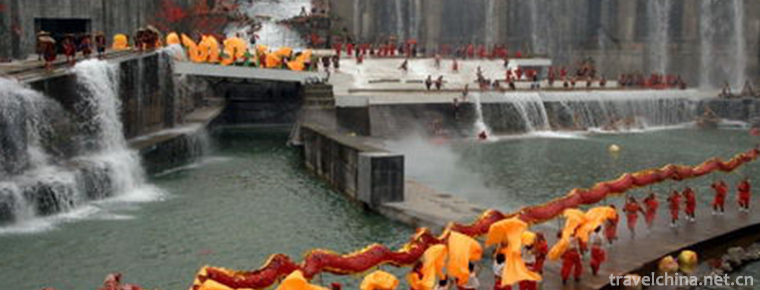
-
Dayi Liushi Manorial Museum
Dayi Liu Manor Museum, located at No. 15 Jingui Street, Anren Town, Dayi County, Chengdu City, Sichuan Province, is one of the most important historical sites and representative buildings in modern Ch.
Views: 203 Time 2018-12-26 -
Wuhou Tomb Scenic Area
The Tomb of Marquis Wu is the tomb of Zhuge Liang, a famous statesman and militarist in the Three Kingdoms Period. It is located at the foot of the ancient battlefield of Dingjunshan.
Views: 147 Time 2019-02-24 -
Chengdu lacquer art
Chengdu lacquer art, the traditional handicraft of Chengdu City, Sichuan Province, is one of the national intangible cultural heritage..
Views: 159 Time 2019-04-18 -
Shaolin Kung Fu
Shaolin Kungfu, also known as Shaolin Wushu, is one of the famous schools of Wushu in China. It has a long history and profound influence. It is an important part of Chinese traditional Wushu. The mos.
Views: 165 Time 2019-06-14 -
Zhuang medicine thread moxibustion therapy
Zhuang medicine is the traditional medicine of the Zhuang people. It is a national traditional medicine based on the ancient Luoyue culture and Lingnan culture, with Yin and Yang as its foundation, Qi.
Views: 166 Time 2019-08-16 -
Panzhihua College
Panzhihua College is the only comprehensive undergraduate college in southwest Sichuan and northwest Yunnan, where the Ministry of Education locates. The school is located in Panzhihua City, a famous .
Views: 257 Time 2019-08-31 -
Tongling University
Tongling University is a multi-disciplinary province. Undergraduate Regular institutions of higher learning It is the base for training and training talents of Finance and economics in Anhui province..
Views: 166 Time 2019-11-18 -
Scientific research on Chengdu Giant Panda Base
As of 2016, it has undertaken one national major basic research project (former "973" project), one national "Tenth Five Year Plan" high technology research (863 plan), several provincial, ministerial and municipal scientific research projects and Chengdu Giant Panda Breeding .
Views: 105 Time 2020-12-13 -
Administrative division of Luzhou
In 1949, the southern Sichuan District Committee of the CPC was established in Zigong. In January 1950, the southern Sichuan district was transferred to Luxian County, and the people's Administrative Office of South Sichuan was set up (provincial level, abolished in August 1952).
Views: 161 Time 2020-12-14 -
Leshan specialty food
Leshan bean curd is one of the special snacks in Leshan, Sichuan Province. The bean curd has deep red pepper and green coriander or celery..
Views: 78 Time 2020-12-17 -
Nanchong cultural undertakings
By the end of 2019, Nanchong has 10 cultural centers, 242 cultural stations and 10 public libraries. There are 8 museums, 28 cultural relics protection and management institutions, 18 national key cultural relics protection units, 112 provincial-level cultural relics protection units.
Views: 297 Time 2020-12-17
